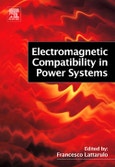A large amount of natural or artificially produced physical phenomena are exploited for practical applications, even though several of them give rise to unpleasant consequences. These ultimately manifest themselves under form of malfunction or definitive failure of components and systems, or environmental hazard. So far, manifold categories of inadvertent or deliberate sources have been discovered to simultaneously produce useful effects in some ways but adverse ones in others. In particular, responsible for the growing interest in the last decades for Electromagnetic Compatibility (EMC) has been the progressive miniaturisation and sensitivity of electronic components and circuits, often operating in close proximity to relatively powerful sources of electromagnetic interference. Potential authors of books on the subject-matter are fully aware of the fact that planning production of manageable handbooks capable to treat all the EMC case studies of practical and long-lasting interest could result in a questionable and difficult undertaking. Therefore, in addition to textbooks providing a thorough background on basic aspects, thus being well-tailored for students and those which want to get in contact with this discipline, the most can be made to jointly sustain a helpful and practicable publishing activity is to supply specialised monographs or miscellanies of selected topics. Such resources are preferentially addressed to post-graduate students, researchers and designers, often employed in the forefront of research or engaged for remodelling design paradigms. Hence, the prerequisite for such a class of publications should consist in arousing critical sense and promoting new ideas. This is the object of Electromagnetic Compatibility in Power Systems, which tries to rather discuss special subjects, or throw out suggestions for reformulating conventional approaches, than to appear as a reference text. A common motivation encouraged the contributors to bringing together a number of accounts of the research that they have undertaken over the late years: willing to fill the important need of covering EMC topics rather proper to transmission and distribution of electric power than, more usually, to Electronics and Telecommunication Systems.
Please Note: This is an On Demand product, delivery may take up to 11 working days after payment has been received.
Table of Contents
1. A Combined Electrostatic-Electrodynamic Approach to Lightning Pre-Stroke Phenomena and Related EMC Problems2. A Reasoned Approach to Lightning Electromagnetics and Coupling to Nearby Power Transmission Lines
3. Effects of Geomagnetic Storms on Long Distance A.C. Transmission Systems
4. Evaluation of the A.C. Interferences Between Transmission Lines and Metallic Underground Structures
5. The Crucial Case of Quasistatic Magnetic Field Penetration into Metallic Enclosures: An Unexplored Model
6. Diakoptic Approach to EMC Problems Involving the Human Body
7. New Power Quality Assessment Criteria for Harmonic Disturbances
8. Design of Line Front-End Converter Systems under Real Line Conditions
9. Adjoint Network Theory to Analyze the Power Converters with Respect to their Line-Side Behaviour
10. Harmonic Load Flow Applications for Industrial Power Systems Design
11. Shunt Active Filters to Mitigate Harmonic Propagation in Distribution Lines Introduction








